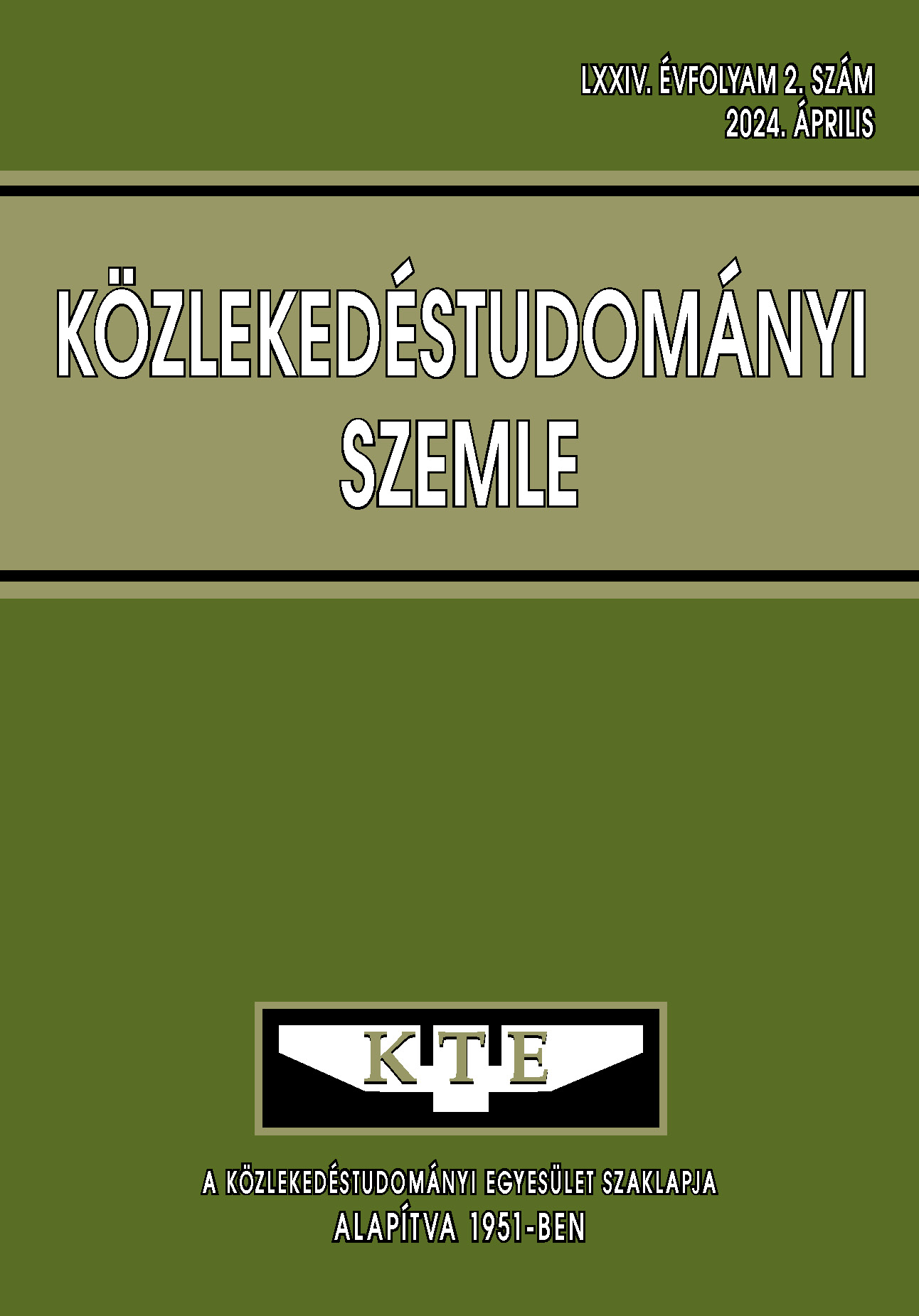Proposal for a comprehensive study on the development of the railway network
Abstract
Among the backlogs accumulated on the Hungarian railways over several decades, it is mainly the technical ones that are currently being filled, while the development of connections between the settlements within the network is only at the beginning. To be able to look at least 30 to 40 years ahead, it is advisable to analyse the history of the development of the
Hungarian railway network, including the interrelations between settlements, economy, technology, society, etc., without neglecting the international perspective, also in comparison with certain European countries. This article aims to draw attention to the importance of this task, using a few examples.
References
Az útirányok: 1. Budapest-Bécs, 2. Budapest-magyar tengerparti városok, 3. Budapest-Zimony, 4. Budapest-Morvaország, 5.Budapest-Galicia határa, 6. Budapest-Kolozsvár, 7. Budapest-Nagyszeben, 8. Bécs, illetve osztrák határ-magyar tengerpart, továbbá Eszék és Törökország, 9. Bécs, illetve osztrák határ-Krakó, 10. Nagyszomvat- Kanizsa, 11. Kassa-Krakó, 12. Miskolc-
Legyelország határa, 13. Sziszek-magyar tengerpart. A Pallas Nagy Lexikona 12. kötet,111. old., 1896.
Dr. Ábrahám Kálmán: A közúti közlekedés kézikönyve, 1, kötet, 67. old. Műszaki Könyvkiadó, Budapest, 1978.
Fleischhauer Strasse, a Buda-Bicske-Kocs-Győr útvonal
Lovas Gyula: A Fertővidéki HÉV (1897-1997). Soproni Szemle, 1998. évi 1. szám.
Articles published electronically are open access (OJS), freely available online and can be downloaded. Authors of articles are not charged any publication or publishing costs (APC). Users have the right to read, download, copy, print, and search the articles, or share the full text with a link.
Authors must declare that their submission has not been previously published in another journal, that financial support has been acknowledged, and that the list of references is complete and accurate, including specification of URLs and DOIs (if available). When submitting a draft article, each author approves the submitted version. Authors guarantee that the article is their original work. Authors are required to participate in the peer review process, follow the advice of reviewers, meet the prescribed deadlines, and, if any, withdraw the submission or correct errors.
All submitted articles are subject to peer review, where the editors request an independent evaluation from at least one expert, ensuring that the reviewer(s) have no conflicts of interest with the authors. The final decision is made by the Editor-in-Chief, who takes into account the evaluations and the suggestions of the editors. The editors and reviewers treat the submission confidentially.
The publisher and editors are committed to maintaining high ethical standards and to preventing publications that involve research misconduct. They follow the COPE guidelines on such ethical issues.
The authors retain copyright and grant the journal the right of first publication under the Creative Commons License (https://creativecommons.org/licenses/by-nc-nd/4.0), which allows others to share the work, while acknowledging the authorship of the work and the first publication in the journal.
The journal archives all published articles, and the journal's owner, the Hungarian Society of Transportation Sciences, will continue to operate the database even if the journal ceases to be published.















